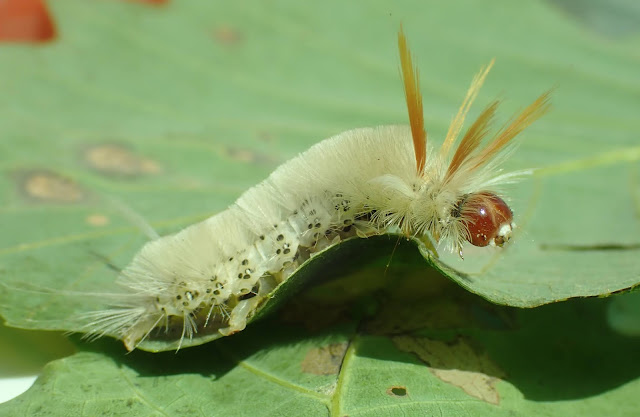 My five year old associate named River found this moth above crawling on his shirt. He reluctantly let me have it in the name of science and we identified it as a sycamore tussock moth, Halysidota harrisii. We see the moth frequently by our deck light but this was the first larva I had seen. Its four orange tufts of hairs are called pencils and are quite distinctive. In addition to the crew cut hairs along the back you can see small tufts of hairs along the side. These look like the urticating hairs of some of the stinging caterpillars we discussed here, but there are only a few reports of sensitivity and most sources say they don't sting.
My five year old associate named River found this moth above crawling on his shirt. He reluctantly let me have it in the name of science and we identified it as a sycamore tussock moth, Halysidota harrisii. We see the moth frequently by our deck light but this was the first larva I had seen. Its four orange tufts of hairs are called pencils and are quite distinctive. In addition to the crew cut hairs along the back you can see small tufts of hairs along the side. These look like the urticating hairs of some of the stinging caterpillars we discussed here, but there are only a few reports of sensitivity and most sources say they don't sting.River had been swimming in our creek which is lined with sycamores. These caterpillars are frequently found swinging on a thread of silk close to the ground. It is likely that he walked into at thread and picked up a hitchhiker. Fortunately this one was harmless.
 |
| Cocoon after emergence |
The moth is a beauty with a turquoise dyed stripe on the edges of orange, a pattern a modern teenager might envy. I had previously identified it as a banded tussock moth, Halysidota tessellaris, but according to Insectidentification.org these two species are identical in appearance and can only be separated by careful anatomical examination. Therefore you can't prove me wrong.
With this important addition to natural science, I hope that River can forgive me for taking his caterpillar.


